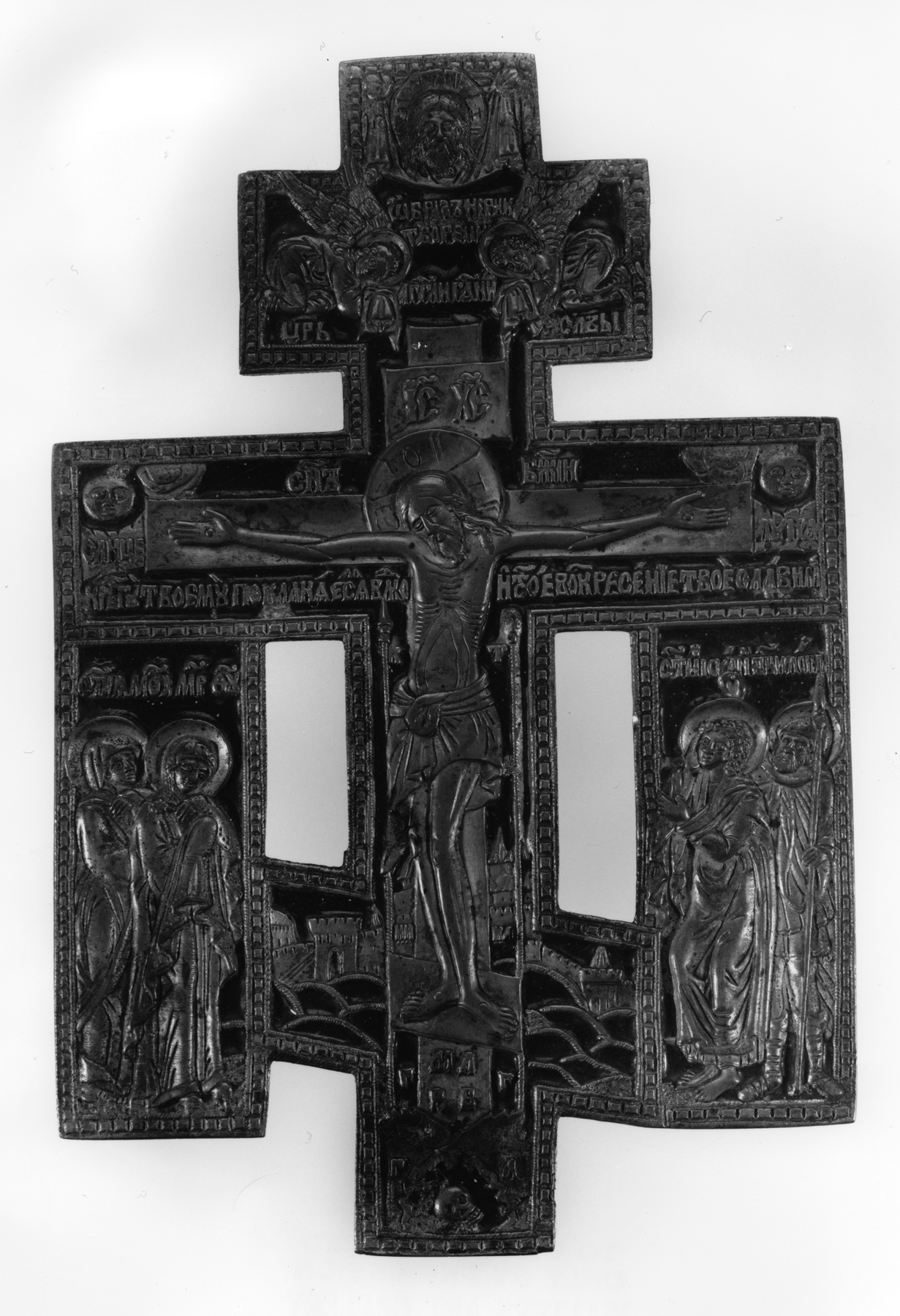Crucifix
(Byzantium and Early Russia)
The crucified Christ is flanked by his mother, another Mary, St. John, and the centurion Longinus. On the beam at Christ's feet are the walls of Jerusalem, emphasizing that he was born and died outside the city, for "our commonwealth is in heaven" (Phil. 3:20). Below Christ's feet is the skull of Adam, with an abbreviated inscription, meaning "the place of the skull became Paradise" ('Golgotha' means 'Place of the Skull'). Images of the sun and moon suggest the grief of the visible world at the death of Christ.
The inscription over Christ's head, not the traditional "Jesus Christ, King of the Jews" associated with Pilate, but "Jesus Christ, King of Glory," suggests that this icon belonged to a group of "Priestless" Old Believers. This also explains why there is no image of the Holy Spirit represented as a dove between the attendant angels, as one usually finds on metal crucifixes, and why the usual "Sabboath" representation of God the Father at the top has been replaced by an image of the Holy Face; conservative groups of Old Believers did not believe in the iconic representation of any person of the Trinity but the Son.
Provenance
Provenance (from the French provenir, 'to come from/forth') is the chronology of the ownership, custody, or location of a historical object.
[Purchased in Russia]; George Way Williams, Detroit, Michigan, 1919-1920, by purchase; J. Henry Dasenbrook, Baltimore, ca. 1980, by inheritance; Walters Art Museum, 1985, by gift.
Exhibitions
| 2002-2005 | Realms of Faith: Medieval and Byzantine Art from the Walters Art Museum. Frist Center for the Visual Arts, Nashville. |
| 2001-2002 | Realms of Faith: Medieval and Byzantine Art from the Walters Art Museum. Frist Center for the Visual Arts, Nashville. |
| 1988-1989 | A Millennium of Christianity: Russian Art from The Walters Art Gallery. The Walters Art Gallery, Baltimore. |
Geographies
Russia (Place of Origin)
Measurements
H: 8 3/4 x W: 5 11/16 x D: 3/16 in. (22.2 x 14.5 x 0.5 cm)
Credit Line
Gift of Mrs. J. Henry Dasenbrock, 1985
Location in Museum
Not on view
Accession Number
In libraries, galleries, museums, and archives, an accession number is a unique identifier assigned to each object in the collection.
In libraries, galleries, museums, and archives, an accession number is a unique identifier assigned to each object in the collection.
54.2622


